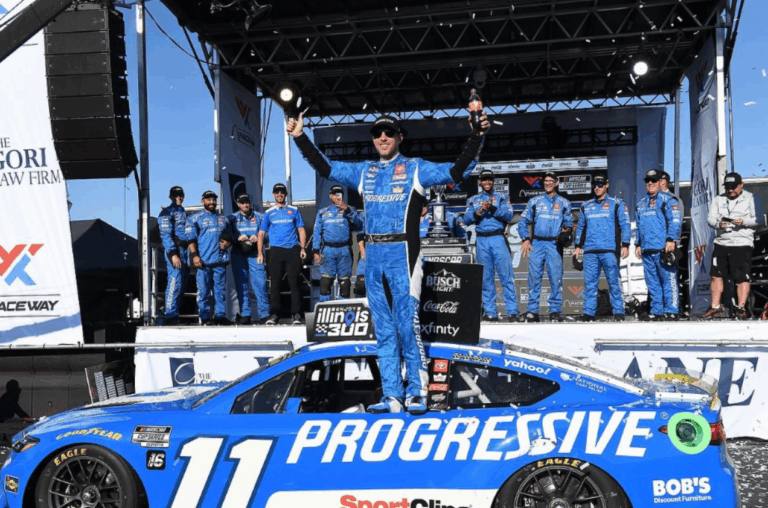By Joe Dunn
For Denny Hamlin the 2010 season was off to a pretty rough start, so when they scheduled the surgery on his knee it didn’t seem like it would have a major impact on his season.
Prior to Martinsville, the last race before his surgery, Hamlin’s best finish was 17th at the Daytona 500. Heading into the 6th race at Martinsville, Hamlin was sitting 19th in points without a top 10 finish in the first five races, something he had not experienced in his five previous NSCS seasons.
His win at Martinsville, was big considering what he had done so far and would certainly help points wise, if he had to miss any races, but a single missed race would most likely put him out of Championship contention. The general consensus before the surgery was that Hamlin would miss at least one race, possibly more, and that he would start a few races and then let a substitute driver finish the race.
The NASCAR Sprint Cup Series had a week off after Martinsville, so Hamlin got less than 10 days after surgery to climb back into the car at Phoenix. Denny, rather than practicing qualifying or race runs , instead practiced getting in and out of the car. When the green flag dropped, Casey Mears was standing by in the #11 pit, waiting to replace Hamlin on the first caution. But instead, Hamlin remained in the car. It was apparent from his run and the 30th place finish, that Denny was really suffering through the race. He could have taken the opportunity to climb out early and that probably would have resulted in a better finish, but Hamlin was determined to tough it out. It was a long and painful process just getting Hamlin out of the car after the race.
It was that determination by Hamlin that led to such an unbelievable recovery. That surgery not only repaired his knee, it repaired his season. He made up for that 30th place finish at Phoenix by going to Texas and winning. Three weeks later, he won both the NSCS and the NASCAR Nationwide Series races at Darlington. Since that 30th place at Phoenix, his worst finish has been an 11th at Richmond. In six races prior to the surgery, Hamlin had an average finish of 17.6, in the 6 races since the surgery he has an average finish of 8.5.
But it’s not just the finishes that have improved, after all some folks could say that a lot of that is luck, but his other stats have shown remarkable improvements. Here’s a look at some of those states, before and after the surgery. Average running position throughout the race, before, he ranked 18th at 17.85, after, he ranks 8th at 14.63. Closing rate, in the last 10 laps of the race, before, he ranked 33rd, with an average of -3, after, he is 7th with an average of +7.16. Hamlin went from running in the top 15 during races at 36.1% to now averaging 51.6% running in the top 15.
When Hamlin injured his knee in a basketball game a few weeks prior to the January Speed Week at Daytona, that led up to the Daytona 500. At the time ESPN analyst Dr Jerry Punch said, “In essence, it’s not that big a deal given what drivers normally have to do in the car,” Punch, a former emergency-room physician, also commented “ No two people are the same in terms of how much instability they have when they tear an ACL. Typically, somebody that is Denny’s age, young and in great physical shape, can rehab that knee without having it operated on.” Even JD Gibbs was not worried, “He’ll be fine. The hardest part’s going to be just the stuff he loves to do, play basketball and other sports. He’ll not be able to do that,” Gibbs said. “He’ll be fine; he’ll just be frustrated.”
It seems clear to me that the surgery, in addition to repairing the knee, also repaired the driver’s slump that Hamlin suffered for the beginning of the 2010 season.






